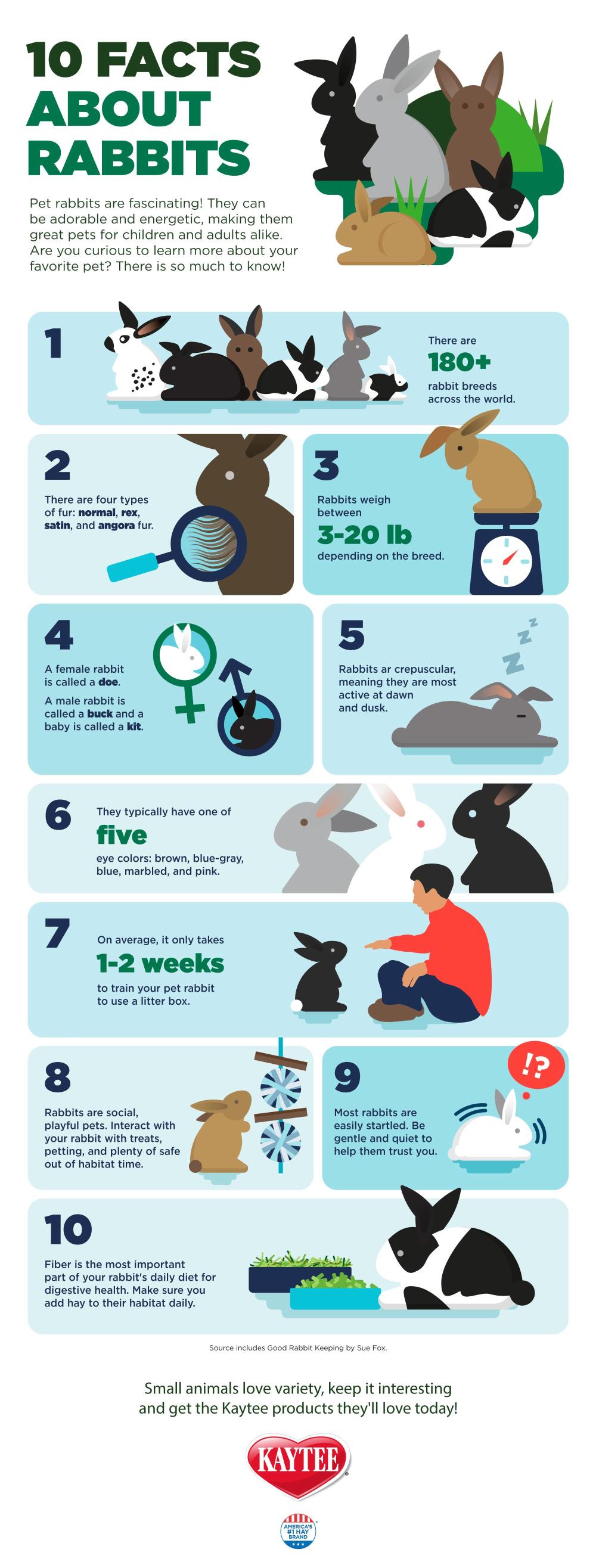10 Facts about Rabbits
Pet rabbits are fascinating! They can be adorable and energetic, making them great pets for children and adults alike. Are you curious to learn more about your favorite pet? There is so much to know!
Rabbits are complex animals with many traits and characteristics, so we have put together ten facts to help you learn about your furry pet.

1. There are 180+ rabbit breeds across the world – These breeds are differentiated by lop ears, length of hair, and size of the rabbit. There are many features to every breed.
2. Rabbits weigh between 3-20 pounds depending on the breed – Kaytee offers the right products for each breed. Bigger breeds may need a larger habitat and long haired breeds may require more frequent grooming. Explore all Rabbit Products Here.
3. There are four types of fur: Normal, Rex, Satin, and Angora fur. The most common pet rabbit is the Rex breed.
4. A female rabbit is called a doe. A male rabbit is called a buck and a baby is called a kit.
5. While not nocturnal, rabbits do sleep during the day. This is because rabbits are crepuscular which means they are most active at dawn and dusk.
6. They typically have one of five eye colors: brown, blue-gray, blue, marbled, and pink.
7. Similar to cats, rabbits can be litter trained. On average, it only takes about 1-2 weeks to train your pet rabbit to use a litter box.
8. Rabbits are social, playful pets. It’s important to keep bunnies entertained with plenty of toys, chews, and attention. We also recommend interacting with your bunny with treats, petting, and plenty of safe out of habitat time.
9. Most rabbits are easily startled. Being gentle and quiet will help your pet trust you and feel comfortable in his or her environment.
10. Fiber is the most important part of a rabbit's daily diet. Hay is high in fiber and essential for digestive health. Hay also provides dental benefits as the texture and chewing activity helps wear down your rabbit’s continually growing teeth. In addition to daily fresh hay, make sure to pick out food that suits your rabbit’s health needs using the guide on our website.

Source includes Good Rabbit Keeping by Sue Fox.




